Uno de los panes que no pueden faltar durante la Semana Santa es la trenza de huevo o pan de ovo gallego. Se suele preparar como forma de rosca o largo y forma parte de la tradición entre padrinos y madrinas con sus ahijados. En muchas partes del mundo, obsequiar panes dulces forma parte de la tradición de desear lo mejor e iniciar un nuevo ciclo y en España no es la excepción, ya que tienen una amplia variedad de panes que se obsequian durante la Pascua y el pan de ovo gallego es uno de ellos. Con esta pan, agrego otra entrada a mi serie de #panesdepascua.
One of the breads that cannot be missed during Easter is the egg braid or Galician ovo bread. It is usually prepared as a doughnut shape or long and is part of the tradition between godfathers and godmothers with their godchildren. In many parts of the world, giving sweet breads as gifts is part of the tradition of wishing the best and starting a new cycle and Spain is no exception, as they have a wide variety of breads that are given as gifts during Easter and the Galician ovo bread is one of them. With this bread, I add another entry to my #panesdepascua series.
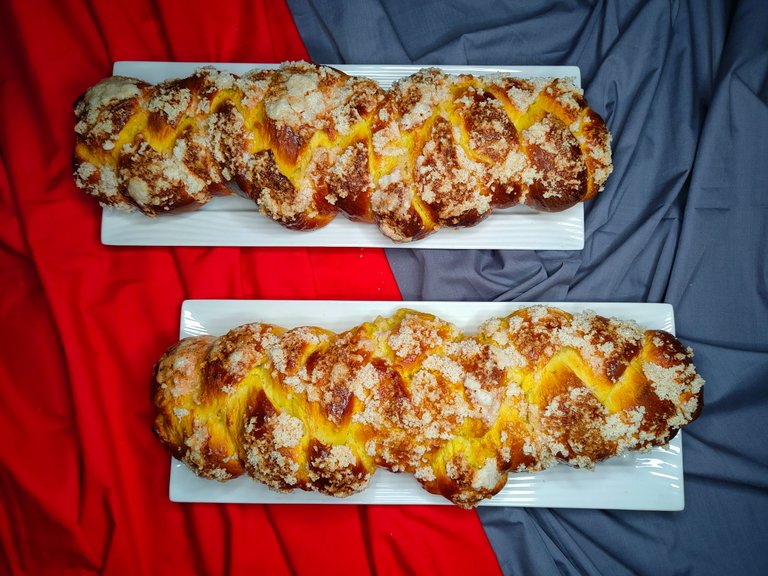
La trezna de huevo, como su nombre lo indica, es un pan trenzado y la referencia de huevos no es tanto porque tenga huevos cocidos en la forma del pan, que los puede tener, más bien hace referencia a la cantidad de huevos que lleva la masa. Se suelen colocar 6 huevos para unos 800 gr de harina. Es un alto % en comparación con otros tipos de panes, pero eso también marca la diferencia en la calidad de la miga, la suavidad y la textura en general.
The egg trezna, as its name indicates, is a braided bread and the reference to eggs is not so much because it has boiled eggs in the shape of the bread, which it can have, but rather it refers to the amount of eggs in the dough. Usually 6 eggs are used for about 800 grams of flour. It is a high % compared to other types of breads, but that also makes a difference in the quality of the crumb, softness and texture in general.
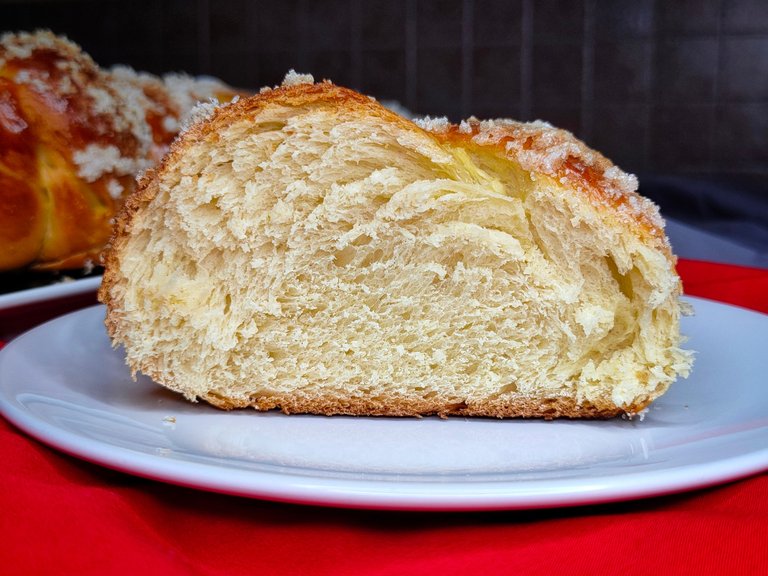
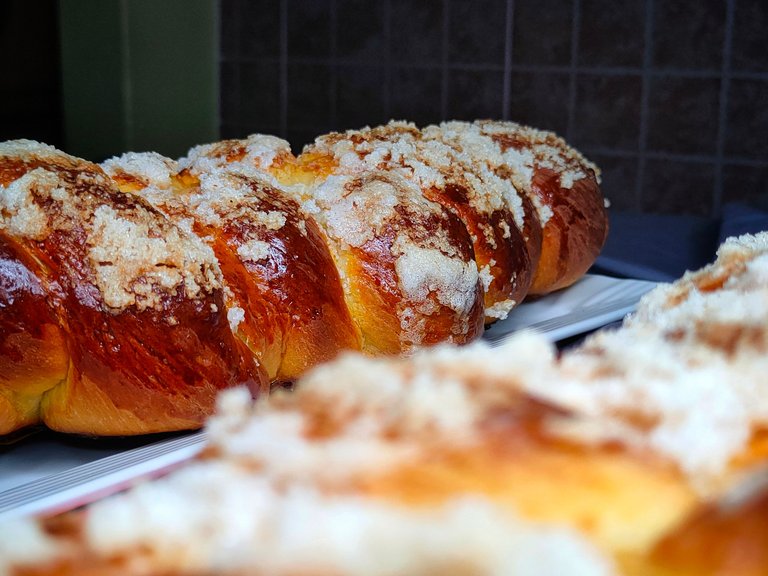
Hablando de sabores, es un pan que resalta por su sabor a naranja y a anís dulce. Estos dos ingredientes hacen una buena combinación, tanto aromática como en sabor. Yo utilicé anís en semillas y para el crocante coloqué licor de anís, para aprovechar toda la gama de sabor de esta especie y con la naranja, utilicé una técnica que la verás en el paso a paso. Escribiendo esto, me han dado ganas de ir a preparar más pan de ovo gallego.
Speaking of flavors, it is a bread that stands out for its orange and sweet anise flavor. These two ingredients make a good combination, both aromatically and in flavor. I used anise seeds and for the crunchy part I used anise liqueur, to take advantage of the full range of flavor of this spice, and with the orange, I used a technique that you will see in the step-by-step. Writing this has made me want to prepare more Galician ovo bread.
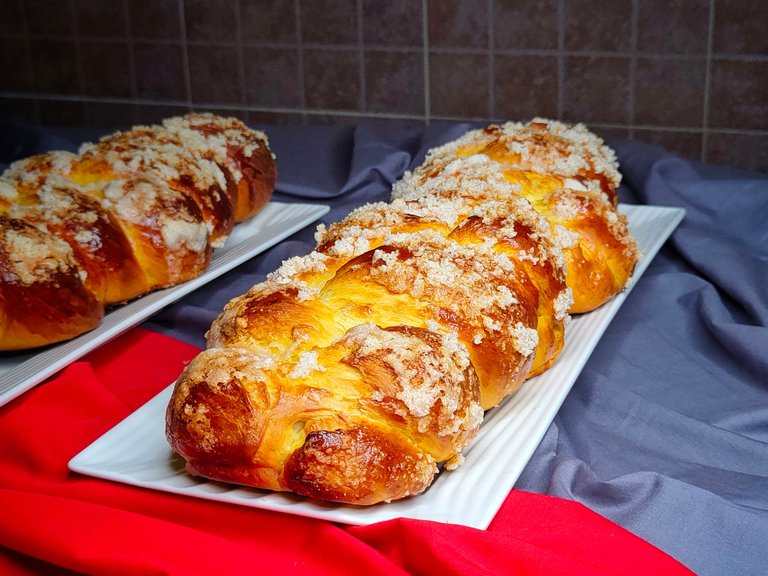
Si quieres aprender a preparar esta versión del pan trenzado de huevos, estos son los ingredientes que yo utilicé:
If you want to learn how to prepare this version of egg braided bread, these are the ingredients I used:

Ingredientes || Ingredients
|
para el pre fermento
Para la masa
Para la cobertura
|
for the pre-ferment
For the dough
For the topping
|

Preparación || Preparation
- Se comienza preparando el pre fermento. Calentar la leche a máximo 40 C. Agregar la levadura y la harina, mezclar y dejar reposar, tapado, por el espacio de 30 minutos. Seguidamente, colocar en un bol el azúcar y agregarle la ralladura de naranja. Mezclar y dejar reposar igual durante 30 minutos.
- Start by preparing the pre-ferment. Heat the milk to a maximum of 40 C. Add the yeast and flour, mix and let stand, covered, for 30 minutes. Next, place the sugar in a bowl and add the orange zest. Mix and let stand for 30 minutes.
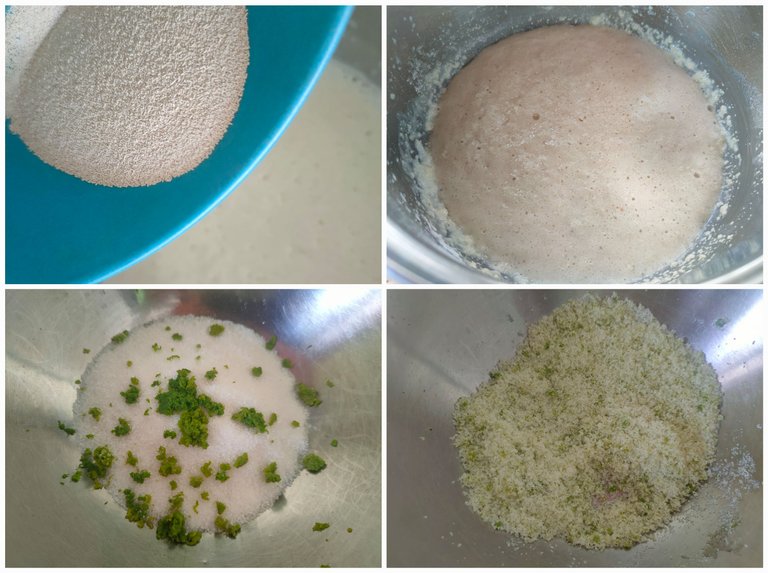
- Una vez pasados los 30 minutos, colocar la harina en un bol grande. Hacer un hueco en el centro y agregar los huevos, la azúcar, la mantequilla derretida, el anís, la sal y el jugo de naranja. Mezclar un poco todo y, una vez se comience a integrar, agregar el pre fermento y se sigue integrando todo.
- After 30 minutes, place the flour in a large bowl. Make a hole in the center and add the eggs, sugar, melted butter, anise, salt and orange juice. Mix everything a little and, once it begins to integrate, add the pre-ferment and continue integrating everything.
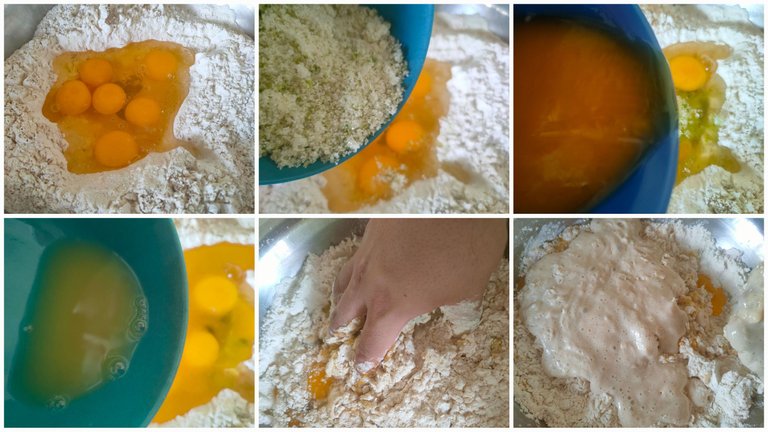
- Comenzar a amasar hasta lograr obtener un bollo de masa. No te preocupes si se te pega todo en las manos, es normal por ser una masa dulce y con un % alto de hidratación. Un tip que ayuda es usar una espátula para despegar la masa del mesón de trabajo y limpiar las manos por completo. La idea es amasar hasta obtener una masa muy suave y lisa. Esto dura alrededor de 15 minutos. Se deja reposar tapada y cubierta con un paño y luego una bolsa, hasta que duplique su volumen (1-2 horas a 30 C de ambiente).
- Start kneading until you get a dough ball. Do not worry if everything sticks to your hands, it is normal because it is a sweet dough with a high % of hydration. A tip that helps is to use a spatula to remove the dough from the work surface and clean your hands completely. The idea is to knead until you get a very soft and smooth dough. This takes about 15 minutes. It is left to rest, covered with a cloth and then a bag, until it doubles its volume (1-2 hours at 30 C at room temperature).
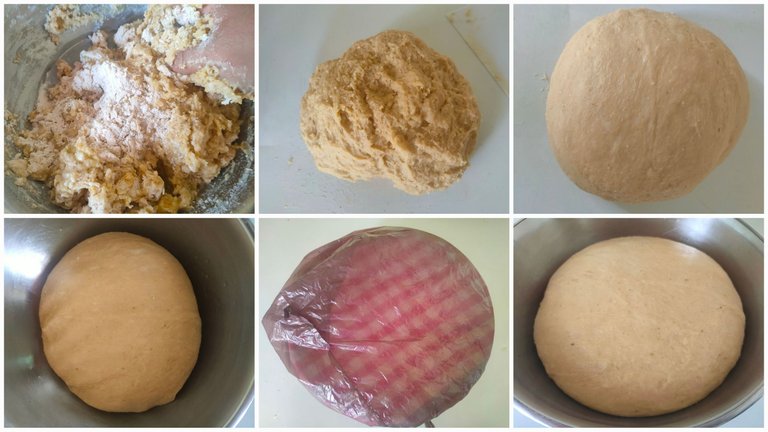
- Dividir la masa en 6 porciones, agarrar una porción y hacer una tira de uno a dos centímetros de grosor. Repetir el proceso con todas las porciones de masa. Agarrar 3 tiras, y formar una clineja, que no tiene que ser perfecta para que tenga una textura rústica. Si se te dificulta manipular la masa, puedes refrigerar 1 hora las porciones de masa y luego comienzas a estirar y todo el resto del proceso.
- Divide the dough into 6 portions, take one portion and make a strip one to two centimeters thick. Repeat the process with all the dough portions. Take 3 strips, and form a clineja, which does not have to be perfect to have a rustic texture. If you find it difficult to manipulate the dough, you can refrigerate the dough portions for 1 hour and then start stretching and the rest of the process.
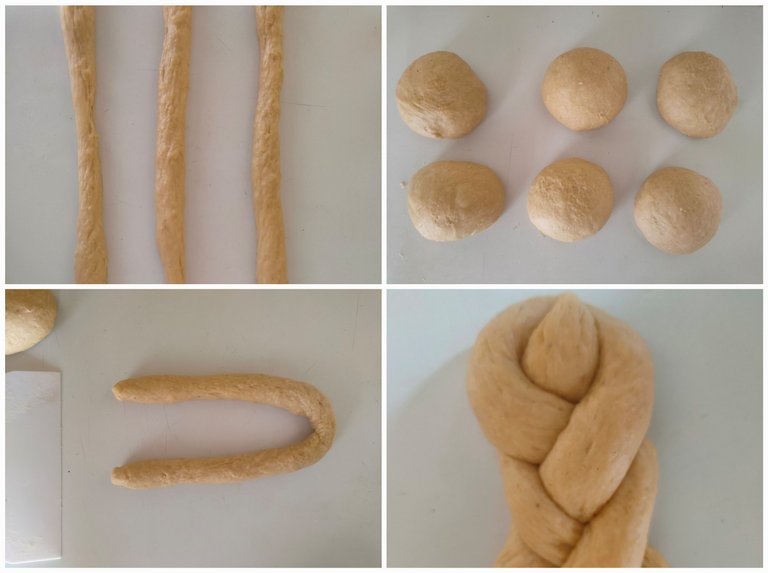
- Formadas las trenzas, se dejan reposar 1 hora, hasta que duplique el tamaño. Se pincelan con el huevo. En un bol, se coloca el azúcar para la cubierta y se dejan caer gotas del licor de anís y se mezclan, hasta lograr textura de tierra mojada. La idea no es colocar mucho líquido, para que se mantenga la estructura del azúcar. Se coloca la azúcar por toda la superficie de la trenza y se hornea, con el horno precalentado a 180 C, por el espacio de 30-35 minutos.
- Once the braids are formed, let them rest for 1 hour, until they double in size. Brush with the egg. In a bowl, place the sugar for the topping and add drops of aniseed liqueur and mix until a wet earth texture is achieved. The idea is not to put too much liquid, so that the structure of the sugar is maintained. Place the sugar all over the surface of the braid and bake, with the oven preheated to 180 C, for 30-35 minutes.

Ya las trenzas de huevo o los panes de ovo gallegos, están listos. Las trenzas se pueden hacer con delicadeza para que queden bonitas, refrigerando la masa antes, pero particularmente me encanta el aspecto rústico y desordenado, que hace que cada porción se vea diferente. Pero al final, todo es cuestión de gustos, respetando el trenzado que forma parte de la tradición. Sin duda es un pan muy aromático, que al momento de hornear, todos tus vecinos se van a enterar.
The egg braids, or Galician ovo breads, are ready. The braids can be made delicately so that they look nice, refrigerating the dough before, but I particularly love the rustic and messy look, which makes each portion look different. But in the end, it's all a matter of taste, respecting the braiding that is part of the tradition. It is undoubtedly a very aromatic bread, that when baking, all your neighbors will know about it.

Déjame saber en los comentarios si has comido un pan así y cuál a sido tu experencia. ¡Hasta una próxima receta!
Déjame saber en los comentarios si has comido un pan así y cuál a sido tu experencia. ¡Hasta una próxima receta!

Todas las fotografías fueron tomadas por mí con un Realme 7 pro. No autorizo a nadie reutilizarlas. Esta publicación fue escrita en español y luego traducida al inglés.
All photographs were taken by me with a Realme 7 pro. I do not authorize anyone to reuse them. This publication was written in Spanish and then translated into English.